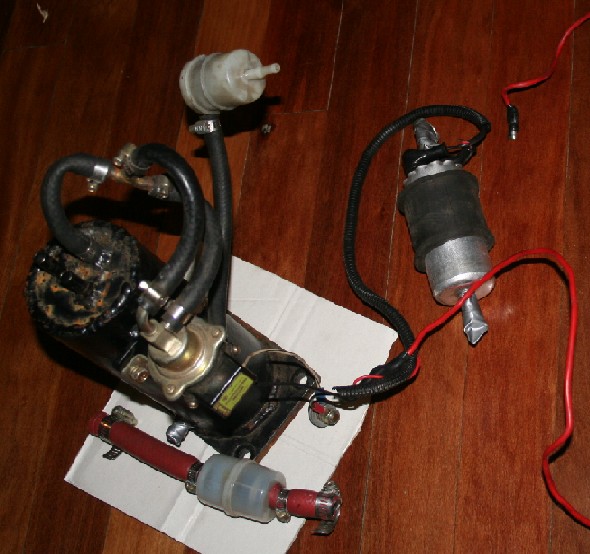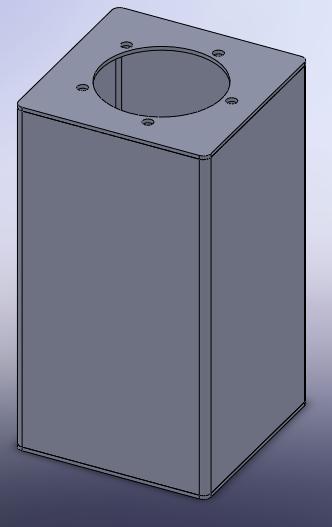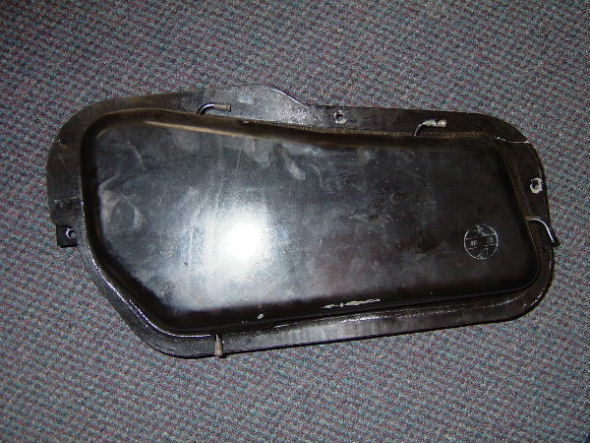The purpose of an anti-surge tank (swirl pot) is for use with an older non-baffled fuel tank to provide a 100% flow of fuel to the high-pressure pump. It also separates any air bubbles picked up from the tank feed. Thus the fuel flow can be occasionally interrupted with no problems -- as long as the EFI fuel pump inlet always has fuel the engine will never act up.
Contents |
Overview
If using a stock Datsun 1200 fuel tank with your EFI system, you'll need to keep the tank 1/3 full. The 1200 tank has some baffling, but not as much as tanks used for EFI systems.
OR, install an anti-surge tank. Use a low pressure fuel pump (lift pump) to fill the tanklet. Excess goes through a return line back to the main fuel tank. Then use a high-pressure EFI pump, drawing from the bottom of the tanklet, to feed the engine. The EFI return line can be fed back to the tanklet or to the main tank.
Ute under-tray mounted Surge tank with lift & high pressure pumps

Trunk-mounted Surge tank with Facet lift pump

Engine-compartment located Surge Tank

OEM Tanks
When Ford was introducing EFI in the 1980s, they used standard fuel tanks and added a fuel/air separator tank.
9K044 Reserve Fuel Tank [EFI swirl tank] 1987-1991 Ford F150/F250/F350/Ranger/Bronco/Econoline Ford part numbers FOTZ9K044Aᴳ $51 USD Amazon.com Reservoirs marked "DO NOT REMOVE CUP" do not contain a filter3/8" and 5/16" tubes

Some have used the Land Rover separator with EFI to good effect.
1987-2006 Land Rover Defender
NRC9772 Petrol Vapour Separator
Use with a restrictor in the return line
$60 eBay, $180 new

Stock Tanklet
Afracer, one of the first club members to swap an SR20 into a 1200, used the stock coupe overflow Fuel Tank as a surge tank
Economical Anti-Surge Tank
From http://www.geocities.com/hrayhouston/antisurgetank.htmlᴬᴿᶜᴴᴵⱽᴱ
I've had fuel injection on my car for many years, even before the rebuild featured on this website. And I've always just had an inline fuel pump and the stock tank with the only change being a return line added. But I've always hated having to keep the fuel tank more than 1/3 full to keep the fuel pickup from being uncovered around corners or on acceleration or stopping. I had several options:
EFI Fuel Tank/System Options:
- Custom fuel tank with internal baffling and possibly an internal fuel pump. $$$$
- Stock tank modified with fuel sump or baffling. $$$
- Custom anti-surge tank between tank and high pressere inline pump. Must have a second pump before the anti-surge tank.$$
- Make my own anti-surge tank, and include an internal fuel pump.$
My economical Anti-Surge Tank:
- Made from an inline water filter housing (GE SmartWater filter housing) purchased for $15 at Home Depot. (There are many brands of these, check the web.)
- Allows use of an internal fuel pump, which are much cheaper than equivalent inline pumps.
(Note - you don't have to use an internal fuel pump, just use a rubber hose long enough to reach the bottom of the tank. If you don't use an internal pump, you can use a shorter 5" housing instead of the 10" housing.)
Fuel Pumps (The one drawback, two are required.): The one drawback to an anti-surge tank is the need for an extra fuel pump to get fuel to it from the fuel tank. I used the inline pump that I had been using to feed the engine to now feed the anti-surge tank. A high pressure pump isn't needed for this, but I already had this one. It feeds fuel to the anti-surge tank and the excess returns to the fuel tank via the return line. I installed a new Mustang internal fuel pump inside the anti-surge tank to feed the engine.
Others
surge tank with dual filters, hi-pressure lift pump. Fuel regulator(?) is bolted to the side of the tank


Compact design for engine bay placement

Simple design utilizing GM fuel pump



![[Datsun 1200 encyclopedia]](/wiki/upload/wiki.png)

